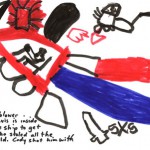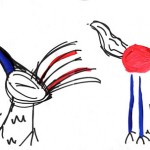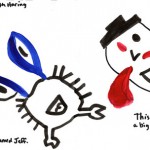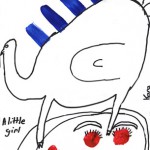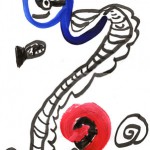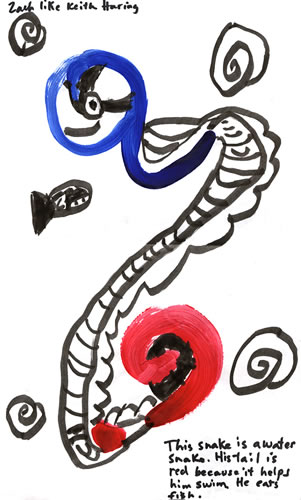
Categories
- Curriculum: Art | Art Criticism | Computer | Language Arts
- Age/Grade: Elementary 2 | Elementary 3 | Middle School | Above 14
- Subject: Writing | Analysis and Theory
- Materials: Pencils
- Institution: The Keith Haring Foundation
- Location: New York, New York
- Duration: 1 - 2 Classes
Description
This lesson helps students explore the creative possibilities of using language to interpret art.
Objective
To teach students about Keith Haring and his series, The Story of Red and Blue
To cultivate reading comprehensions skills by transforming images into stories, instead of the more traditional method of converting language arts into visual arts.
To build students' creative thinking skills by challenging their ability to explore their own associations and understandings of the world around them.
To help students recognize the value of art and creative expression.
Resources
The Story of Red and Blue ART LESSON
Materials
Computers or computer print-outs of The Story of Red and Blue
Writing paper
Pencils
Procedure
INTRODUCTION
Give students a brief background on Keith Haring and some of the other work he created during his lifetime.
STEP 1
Take students through The Story of Red and Blue section on haringkids.com. Print out the series if it is difficult to for everyone to see the work at once.
STEP 2
Discuss one work from the collection, examining it closely. Interpret with the class what that particular work might mean for them, and then, for the artist. Next show the class the rest of the series. Does the meaning of the first work you examined take on a new meaning? Talk about what makes a 'series' and how a grouping of work might affect the interpretation a viewer might have when looking at it. Does it matter if the work is shuffled and presented in a new order? What happens then? Discuss how and why Haring might have made this series, investigating his motivations. Finally, explore with the class how the body of work makes students feel. What their favorite pieces are, why...
STEP 3
Post prints of the Red and Blue series around the room or leave copies out for students to sift through. Allow them to take some time to investigate the work privately. Have them continue to think about the discussion questions, perhaps writing them on the board or creating a ditto.
STEP 4
Introduce the writing assignment, reminding them to maintain their essay writing skills of an opening paragraph, content, and closing paragraph. Tell them to include a setting, a subject, and a story line, and challenge them to even consider different perspectives or identities of the narrator (story teller). Most of all, remind them to have fun and be creative. Just as Keith Haring expressed his own creative and humorous style in The Story of Red and Blue.
STEP 5
Hand out paper and pencils to each student and have them create their own imaginary stories for The Story of Red and Blue, allowing them to finish for homework if necessary.
STEP 6
Once the stories are complete, students can try making their own images of The Story of Red and Blue. Refer to our Art Lesson.
Questions
What did you learn about Keith Haring during this lesson?
What were your feelings of the Red and Blue series after looking at the work?
What were your feelings of the Red and Blue series after writing your own stories?
How did your feelings transform after writing your own story? Why do you think your observations of the work shifted?
How does writing about art shape the way we look at it?
Can anyone name any other places they see writing about art?
What is the difference between writing about art and making writing that IS art? Which one were you doing?
Go back to the beginning of the lesson where you discussed Haring's motivations for creating The Story of Red and Blue. Does anyone have any new ideas on why he might have made this work and what he was saying through it?
How many different possibilities are there to making a Story of Red and Blue?
Extensions
After proofreading and a teacher review, have students volunteer to read their stories to the class.
Invite another class along for a "Red and Blue" party where only red and blue foods are served.
Use The Story of Red and Blue ART LESSON to follow the writing up with art.
Hang all of the work outside of the classroom, matching paintings with stories.
